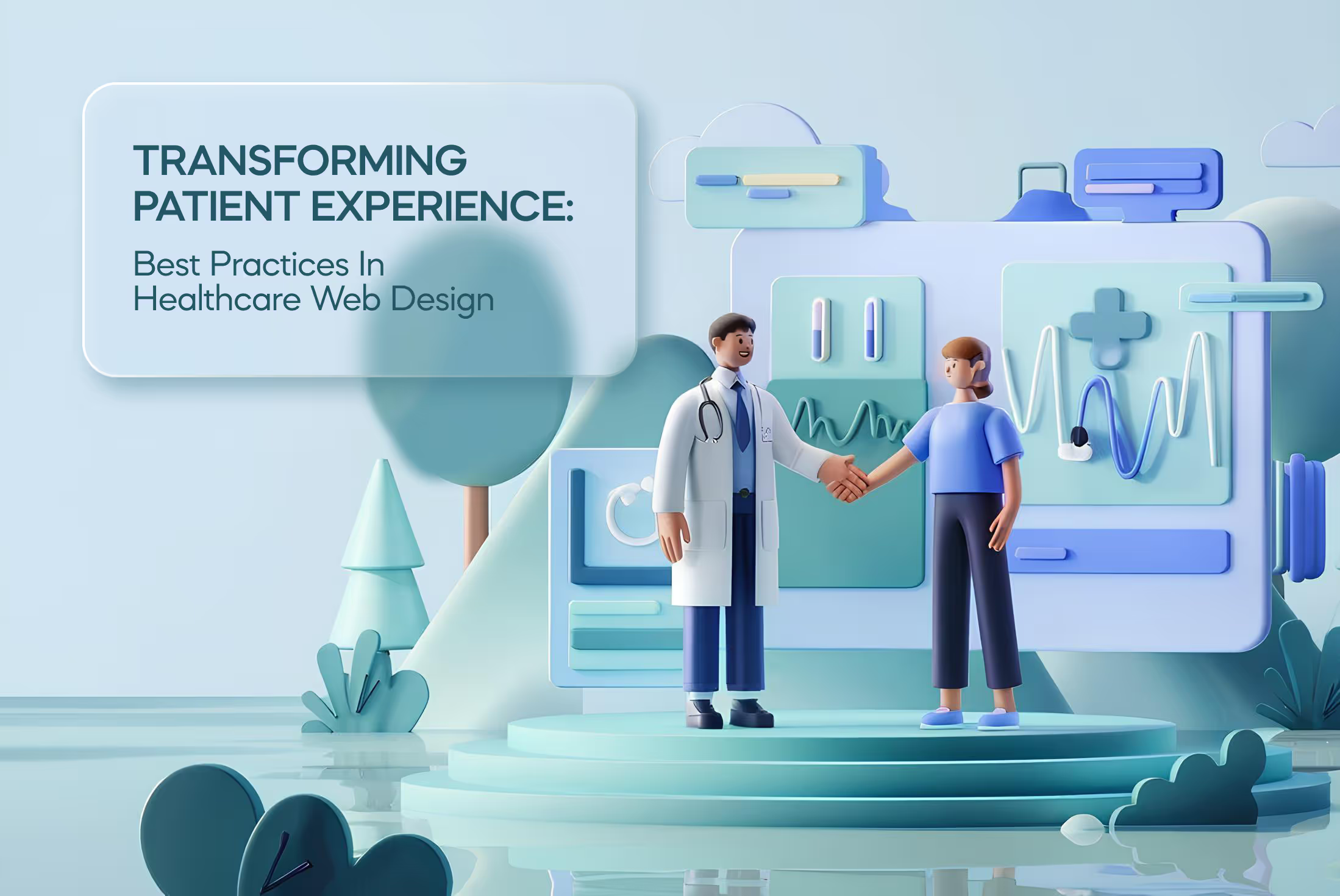Transforming Patient Experience: Best Practices in Healthcare Web Design

When was the last time you visited a healthcare website and thought, “Wow, this is exactly what patients need – easy to use and helpful at every step?”
If that moment feels like a rare find, you’re not alone. For too long, medical websites have felt outdated, confusing, and far from user-friendly.
But in a world where patients increasingly rely on healthcare platforms to make informed decisions, a well-designed website isn’t just a bonus — it’s essential for building trust and enhancing patient experiences.
Let’s dive into what it takes to create a site that truly puts patients first!
Patient-Centered Design
When designing a healthcare website, put yourself in your patients’ shoes. They seek clarity, simplicity, and quick access to what matters most – whether it’s scheduling an appointment or finding crucial health information.
Here’s how to give them what they need:
1. Clear Navigation
Patients shouldn’t have to hunt for important information. Keep menus intuitive, layouts simple, and structure clear so users can quickly find doctors, appointments, or test results — all within a few clicks.
2. Mobile Responsiveness
Today’s patients are increasingly browsing healthcare websites on their phones. Make sure your site is fully mobile-friendly, so they can book appointments or access their medical records from anywhere.

3. Accessibility
Creating an inclusive experience is key. When your site is accessible to elderly users and patients with disabilities, it ensures that no one is left out.
Key Features for an Effective Healthcare Website
In the healthcare world, a website is your digital front door – and how well it works can make all the difference. Take online booking as an example: the faster and easier patients can schedule an appointment, the more confident they’ll feel. That’s just one reason why certain features are vital for an effective healthcare website.
Here’s a quick list of the essentials:
• Online Appointment Scheduling
• Telehealth Integration (in other words, “virtual care” at your patients’ fingertips)
• Secure and Personalized Patient Portals
• Engaging Health Content
• AI-Powered Chatbot – or your 24/7 assistant for instant responses
To explore each of these features in more detail – and discover additional must-haves – check out our article: Top 7 Healthcare Website Features to Stay Ahead.
The Trust Factor: How Design Elements Inspire Patient Confidence
You might not realize it, but the look and feel of your website speaks volumes about your medical practice. A well-designed healthcare website makes patients feel confident and comfortable. Here's how to use design elements to your advantage:
• Color Psychology
Colors have a significant impact on how patients perceive your healthcare brand. Calming tones like blues and greens evoke feelings of trust, peace, and safety. Choose colors that are gentle on the eyes and reflect the comforting nature of your healthcare services.
• Readable Typography
Patients don't want to struggle to read critical health information.
Use legible, accessible fonts that work across all devices. Clear typography ensures your website is easy to navigate and makes your healthcare content more approachable.

SEO Strategies for Healthcare Website Design
An aesthetically pleasing website is just the start. To truly benefit from your medical web design, you need to make sure your site is discoverable. This is where SEO (search engine optimization) comes in.
Follow this steps to help potential patients find you:
Step 1: Optimize Your Keywords
Incorporate relevant keywords like “healthcare services in [City],” “doctor appointment booking,” or “telemedicine for [specific need]” to help your content rank higher in search results and attract new patients looking for care.
Step 2: Focus on Local SEO
Ensure your site is optimized for location-based searches, which is essential if you operate physical clinics or hospitals. Local SEO helps you appear in searches specific to your geographic area.
Step 3: Improve Page Load Speed
A slow-loading website can harm user experience and SEO rankings. Speed up your site by optimizing images and streamlining content, ensuring patients don’t wait to access important information.
Your Website Is Your Patient’s First Step
A successful healthcare website is more than a digital brochure — it’s the first handshake between your practice and potential patients. It should inspire trust, offer ease of use, and guide patients toward better care.
As Steve Jobs once said, “Design is not just what it looks like and feels like. Design is how it works.” Your website should work seamlessly for your patients and your practice alike.
If you’ve been thinking about how to implement these tips but aren’t sure where to start, we’re here to help. From creating intuitive designs to optimizing your site for visibility, our team specializes in building healthcare websites that drive real results.
Let’s work together to create a site that supports your patients and brings your vision to life!





.avif)





